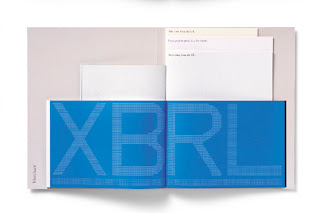I am happy to have a very good working relationship with the people at Push but not necessarily any better than many other printers that we work with and I know we aren't anywhere close to being their biggest supplier. "So why is their work always appearing on this blog?" I hear you ask. Well the truth is, they do produce nice work BUT the most important factor is they take the time and trouble to send me file copies when they have used our papers.
Generally speaking, a designer that I've been working on a project with, will send me some file copies (as you witness here on this blog) for which I'm very grateful. However, sometimes I find out about work done using our paper by accident or a casual "oh yes, we used your stuff on that job a couple of months ago" or even when I get told "I threw away that box of file copies printed on your stuff, just last week" (...Tom - you know who you are!).
So here's an example of what Push do: A nice note from Emma, sent to me with some file copies...
 This particular job is a series of five invitations for the Royal Overseas League (ROSL) annual Scholars Exhibition. They are 406x288mm folding down to 203x144mm, printed CMYK and are really excellent printed samples on our Redeem 100% Recycled 70gsm
This particular job is a series of five invitations for the Royal Overseas League (ROSL) annual Scholars Exhibition. They are 406x288mm folding down to 203x144mm, printed CMYK and are really excellent printed samples on our Redeem 100% Recycled 70gsm
This was followed up a few weeks later with another note with some file copies of the catalogue:
The catalogue shows the work of the five artists and very cleverly utilises each individual printed (bound) section as a section for each artist. This is done by having a section sewn text with "open" binding. What has been cleverly devised with this piece is by mounting the text to the inside back cover of a loose 4pp cover (in a similar way that "swiss binding" works), it has protected the open binding and gives the catalogue an added degree of interest. Each of the colours on the introduction page match up with the individual sections.
Size is 143x205mm. 4pp cover is on Redeem 100% Recycled 240gsm and the 88pp text is on Redeem 70gsm. Designing a catalogue for an exhibition showing such a wide variety of work from different artists is not an easy task but designer Joseph Pochodzaj has made a really excellent job of this publication.
So, that brings me to the end of this piece about whether I push Push! I write this blog to showcase the projects that use our papers and inevitably I can only write about projects if I actually know about them. So to the people that mentioned about me pushing a particular printer - Stop ya moaning, use some of our papers and most importantly, send me some copies!http://www.roslarts.org.uk/
http://www.joepochodzaj.com/
http://www.push-print.com/
PS - Thanks to Emma at Push for sending me the file copies.
Posted by Justin Hobson 18.01.2011







































